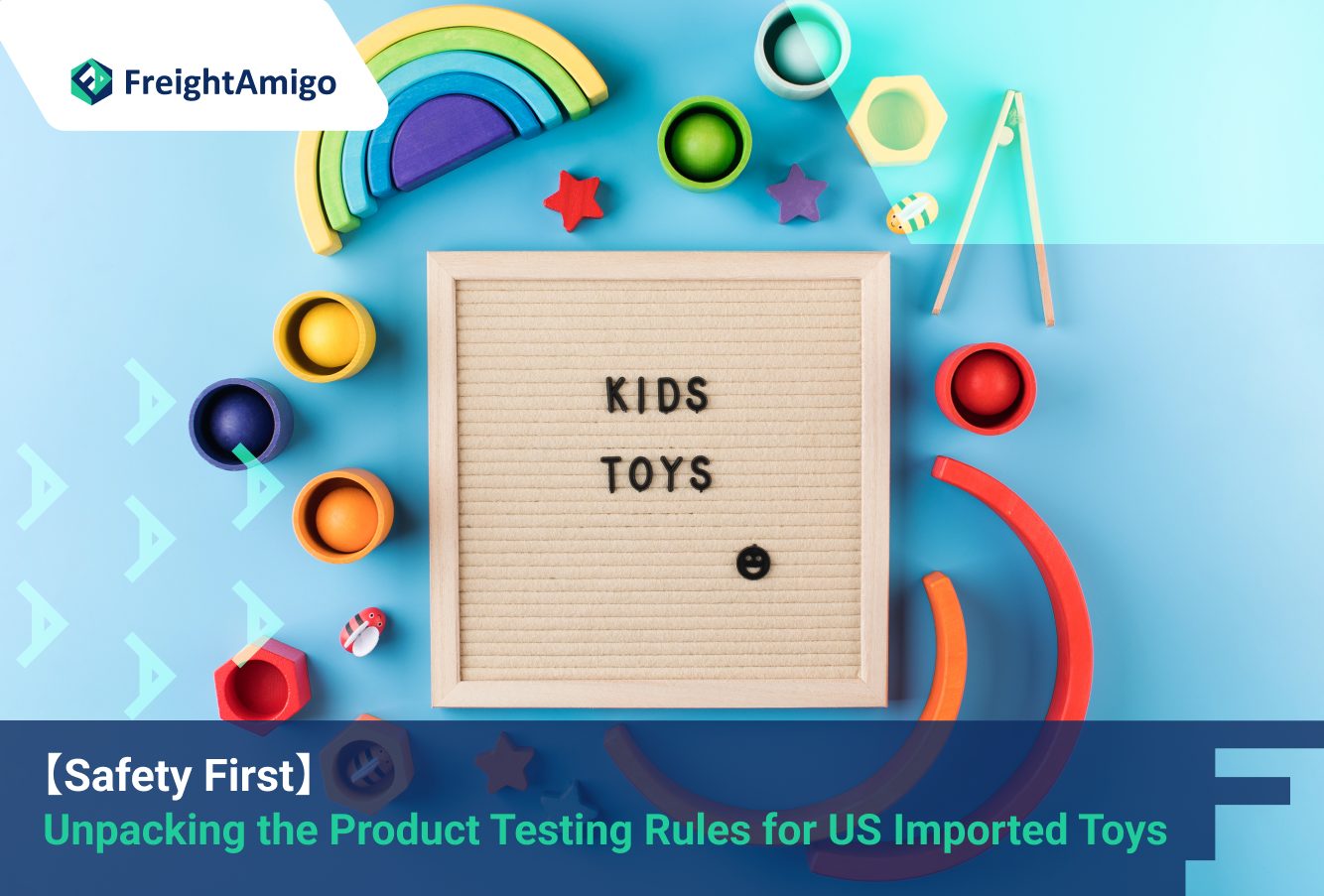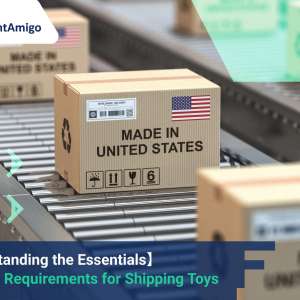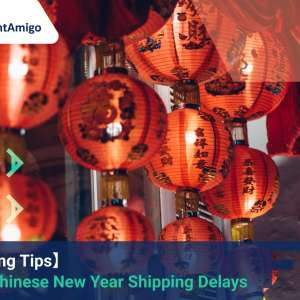When it comes to children, nothing is more important than safety. This is particularly true in the world of toys, where safety is paramount. Every year, millions of toys are imported into the United States, and each and every one of them must meet strict safety standards before they can be sold.
Safety standards for toys are not something to be taken lightly. They are in place to protect the most vulnerable among us: our children. Toys that do not meet these standards can pose serious risks to children, including choking, strangulation, injury, and even death.
The toy industry, therefore, has a huge responsibility. It is their duty to ensure that all toys, no matter where they are manufactured or how they are sold, meet or exceed these safety standards. This is not just a legal requirement; it is a moral one.
Latest update on 12 January, 2024 by Aiden Ng– Marketing Analyst at FreightAmigo
Want to compare the best Express, Air Freight, Sea Freight, Rail Freight & Trucking rates so as to have better control on cost?
Understanding Product Testing for Toys
Product testing is a crucial part of ensuring toy safety. It involves a series of tests and checks to ensure that a toy is safe for use. These tests are designed to identify any potential hazards that a toy may pose and to ensure that the toy can withstand the rigors of normal use without breaking or becoming dangerous.
These tests are conducted both in the country of manufacture and again when the toys are imported into the US. They are rigorous, thorough, and designed to be as comprehensive as possible. They cover everything from the materials used in the toy’s construction, to the toy’s design and functionality, to the age appropriateness of the toy.
The goal of product testing is simple: to ensure that no unsafe toy ever makes it into the hands of a child. It is a complex and time-consuming process, but it is absolutely essential for the safety of our children.
The Role of US Consumer Product Safety Commission (CPSC)
The US Consumer Product Safety Commission (CPSC) plays a vital role in ensuring the safety of toys. This federal agency is responsible for regulating the sale and manufacture of consumer products, including toys. Its mission is to protect the public from unreasonable risks of injury or death associated with the use of consumer products.
The CPSC sets the safety standards for toys and oversees the product testing process. They work closely with manufacturers, importers, and retailers to ensure that all toys sold in the US meet these standards. They also conduct their own tests on toys and have the power to recall any toy that is found to be unsafe.
The CPSC is a vital part of the toy safety ecosystem. They are the watchdogs who ensure that all toys meet the highest safety standards and that the health and well-being of children are always the top priority.
Specific Product Testing Rules for Toys Imported into the US
When it comes to toys imported into the US, there are specific product testing rules that must be followed. These rules are set by the CPSC and are designed to ensure that all imported toys are just as safe as those manufactured domestically.
These rules cover a wide range of areas. They include standards for lead and phthalate content, requirements for flammability testing, and rules for labeling and packaging. They also include specific rules for different types of toys, such as stuffed toys, ride-on toys, and electronic toys.
These rules are not optional. They are mandatory, and any toy that does not meet these standards cannot be sold in the US. This means that manufacturers, importers, and retailers all have a responsibility to ensure that the toys they sell comply with these rules.
The Impact of Non-Compliance with Product Testing Rules
Non-compliance with product testing rules can have serious consequences. Not only can it result in the recall of toys, but it can also lead to hefty fines and legal action. In some cases, it can even result in criminal charges.
But the impact of non-compliance goes beyond just legal and financial consequences. It can also damage a company’s reputation, leading to lost sales and a loss of consumer trust.
Most importantly, non-compliance can put children at risk. This is something that no company wants to be responsible for. Ensuring compliance with product testing rules is not just a legal obligation; it’s a moral one.
How to Ensure Your Imported Toys Meet US Safety Standards
Ensuring that your imported toys meet US safety standards is a multi-step process. It starts with understanding the specific rules and regulations set by the CPSC. This means staying up-to-date with any changes or updates to these rules.
Next, you need to ensure that your toys are tested in accordance with these rules. This can be done by working with a reputable testing laboratory that is familiar with US safety standards.
Finally, you need to maintain complete and accurate records of your testing process. This includes records of the tests themselves, as well as any actions taken to address any issues or problems identified during testing.
Steps to Comply with the Product Testing Rules for Imported Toys
Compliance with product testing rules for imported toys is a process that requires vigilance and attention to detail. Here are some steps you can take to ensure you are in compliance:
- Understand the Rules: The first step is to understand the specific product testing rules for toys imported into the US. This means familiarizing yourself with the CPSC’s regulations and guidelines.
- Work with a Reputable Testing Lab: Partner with a testing laboratory that is familiar with US safety standards. They can help you navigate the testing process and ensure that your toys meet all necessary requirements.
- Maintain Accurate Records: Keep detailed records of your testing process, including documentation of the tests conducted and the results. These records may be required for verification by the CPSC.
- Stay Up-to-Date: Rules and regulations can change, so it’s important to stay up-to-date with the latest safety standards and testing requirements.
Conclusion: Safety First in the Toy Industry
In the toy industry, safety must always come first. This means understanding and complying with the product testing rules for toys imported into the US.
It’s not just about avoiding fines or legal action. It’s about ensuring the safety of our children. And that’s a responsibility that every manufacturer, importer, and retailer must take seriously.
Remember, when it comes to toys, safety is not an option. It’s a requirement. And it’s one that we must all work together to uphold.
There are different options for cargo transportation. If you want to choose the most convenient and suitable solution, it is best to have the full support of logistics experts! If you are planning to ship goods overseas, please go to the FreightAmigo page for inquiries.
===
Read More:
【The Comprehensive Guide to Toy Shipping】 Regulations, Customs, and Best Practices
How to Package Toys for Shipping: Protecting Your Products and Delighting Customers
【Mastering the Rules】 How to Comply with Regulations for Importing and Exporting Toys
【Navigating Paperwork】 A Comprehensive Look at Documentation for Toy Imports and Exports in the US
【Understanding the Essentials】 Labeling Requirements for Shipping Toys
===
If you have any inquiries on logistics/supply chain, feel free to contact FreightAmigo now:
Hotline: +852 28121686
WhatsApp: +852 27467829








































